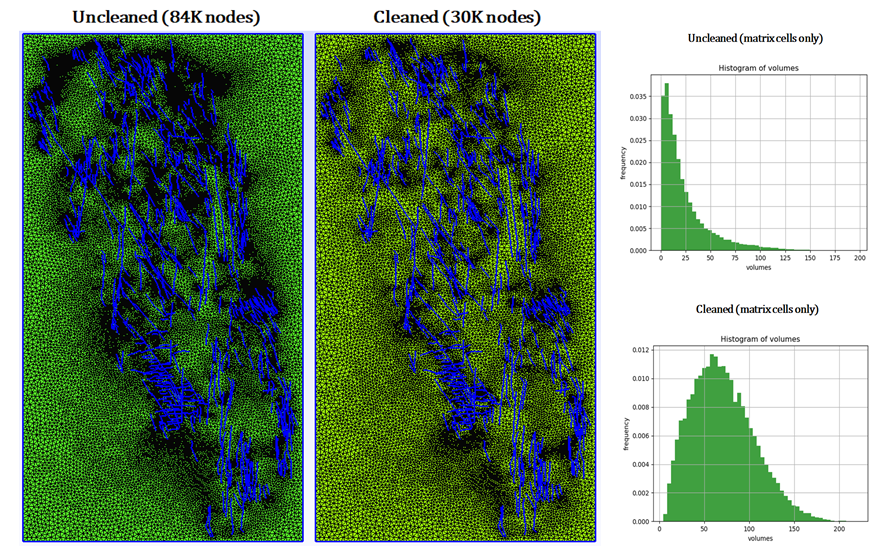Current Discrete Fracture Model (DFM) implementation in DARTS relies on a Two-Point Flux Approximation (TPFA) scheme where fractures are represented explicitly in the numerical model 5. However, explicit representation of the fractures contains complex fracture intersection which in turn might pose meshing difficulties. The resulting mesh, therefore, can contain abundant artefacts which negatively impact the performance of the reservoir simulator. Performance issues mainly manifest as numerical inaccuracies due to non-orthogonality of the control-volume intersections. Secondly, it also manifests in terms of convergence problems due to the extremely large contrast between control volumes sizes as shown in Fig.5 for the realistic outcrop data. All these problems are solved by using a pre-processing method6 in which we sequentially process each fracture, using the desired meshing accuracy (predefined size of the fracture segment). 
Fig.5: Original version of Brejoes outcrop characterization (a) and processed version (b) with corresponding statistics of control volume sizes for both of them (c).
The sequential algorithm adds each fracture line split on segments and resolves all conflicts when segments are close to each other by merging them. The computational time of the pre-processing step is insignificant to simulation time while still greatly improving the simulation results (both accuracy and performance). The result of such pre-processing is shown in Fig.5,b. With this approach, it is possible to construct a discrete fracture network at any desired resolution while maintaining the main characteristics of the original fracture characterization. As can be observed in the Fig.6 for a realistic outcrop data7, minimal information on the fracture network is lost in the processing at a coarser level while the number of degrees of freedom in the model is reduced by several orders of magnitude.

